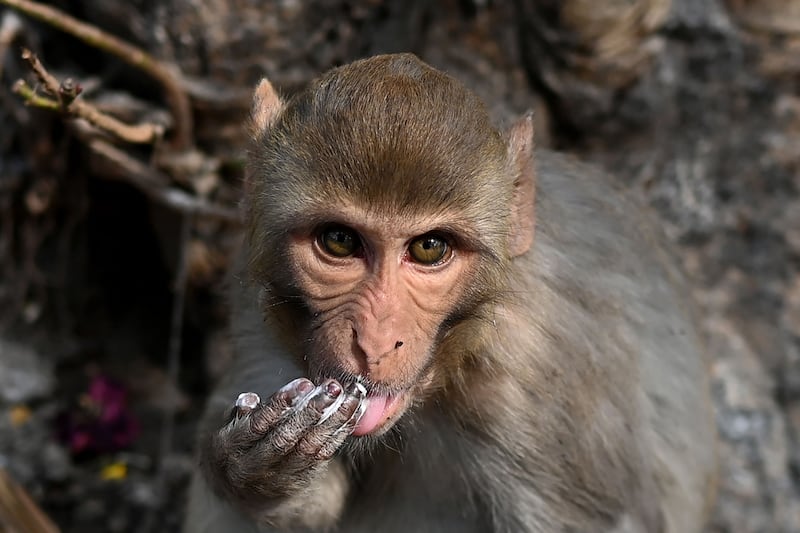India’s capital New Delhi has lost its decades-long battle with thousands of monkeys, who continue to commandeer multiple city neighbourhoods, parks, buildings and the residences and offices of high and mighty government officials.
“There is no way out,” complained Santosh Tiwari, a lawyer representing New Delhi’s local government in response to a petition filed in the High Court seeking an official solution to the capital’s enduring simian problem.
The “alarming” rise in the city’s monkey population, the petition stated, had triggered an increase in monkey bite cases that civic officials said averaged eight per day. It accused local authorities of mismanaging the problem.
Over the years the government has tried different ways of dealing with the population of rhesus macaques – more than 30,000 and growing rapidly – but nothing has worked.
READ MORE
Municipal and wildlife officials have tried trapping, sterilising and relocating the macaques to surrounding jungles but to no avail.
Hindus associate the macaques with Hanuman, the mythological monkey god who, according to the ancient Sanskrit epic Ramayana, helped Rama – one of Hinduism’s principal deities – defeat Ravana, the evil king of neighbouring Sri Lanka more than 7,000 years ago for kidnapping his wife Sita.
India is dotted with Hanuman temples and every Tuesday is reserved for the worship of the monkey god, with tens of thousands of disciples lining up to pay him obeisance.
Shooting marauding monkeys, electrocuting them or poisoning them is looked down upon, and monkey trappers have often been beaten up by devotees, who then fed the animals bananas in the hope of securing divine blessing.
[ Nearly 170 people die as India struggles with sweltering heatwaveOpens in new window ]
Descended from primates that originally inhabited the jungles cleared by the British to build their imperial capital New Delhi in the early 1900s, these macaques are now largely unafraid of humans and responsible for unleashing unbridled havoc, snatching food and attacking people who try to stop them.
They are said to have overrun the 340-room sandstone presidential palace – formerly the British Viceroy’s House, which is spread across 320 acres in the city centre – the contiguous parliament house and north and south blocks, which house the prime minister’s office and the defence, home and finance ministries.
Officials walk warily down vast passageways in these colonial-era buildings, fearful of being set upon by macaques, concealed in their dark niches. Wire meshing protects the offices of Indian’s three armed service chiefs, who collectively head a nuclear-armed military, from the monkeys.

In 2014 the problem was so bad that senior officials from prime minister Narendra Modi’s newly elected government were unable to move into their palatial official residences in the heart of the city because of marauding monkeys. Municipal officials deployed numerous “ape men” in monkey suits who mimicked long-tailed Langur monkeys, which the pillaging macaques fear and flee from. The “ape men” leapt around making loud, throaty sounds and intimidating gestures that temporarily succeeded in scaring the monkeys away but they were soon back, often in greater numbers, to re-establish control.
Monkey brigades have also besieged the All-India Institute of Medical Sciences, Delhi’s flagship research hospital, having recently learnt to operate the newly installed automated doors aimed at keeping the animals out.
[ Why Biden is rolling out the red carpet for India’s ModiOpens in new window ]
Having descended from those who escaped the institute’s research laboratories several decades ago, the monkeys are known to frequently invade patient recovery rooms for food, mess with medical equipment and terrify staff.
All endeavours to rid the institute of monkeys, however, are restricted by religious sentiment, as relatives and friends visiting hospitalised patients regularly feed them in the belief that Hanuman the monkey god will divinely intervene and cure their loved ones.












